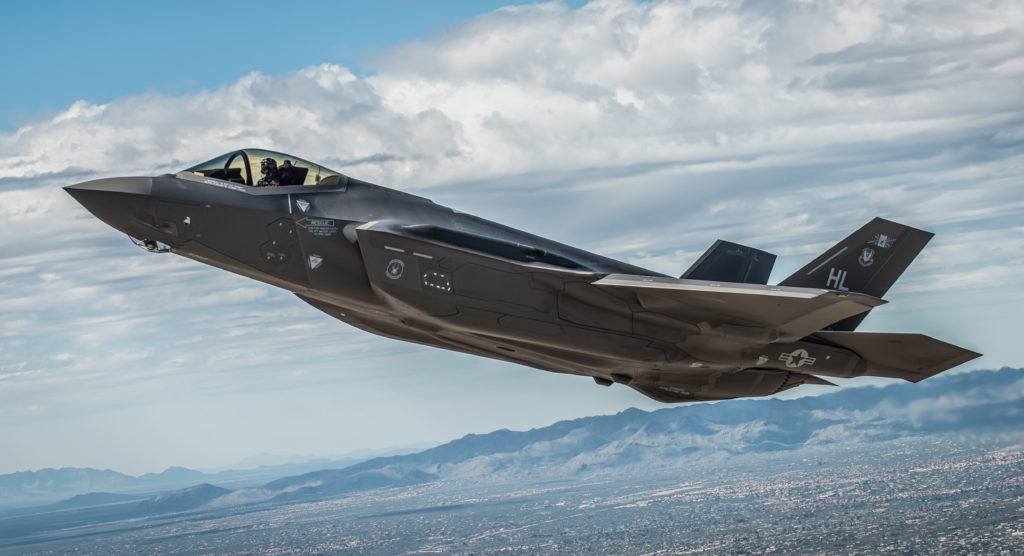Estimated reading time 6 minutes, 14 seconds.
Lockheed Martin’s recent disclosure that its F-35 Joint Strike Fighter (JSF) production schedule is slipping again could be problematic for some foreign customers, but not the Royal Canadian Air Force (RCAF), it seems.
Based in Fort Worth, Texas, the global defence giant had expected to deliver the first in a series of upgraded aircraft by year’s end, but that has slipped to April 2024 at the earliest. The shift in focus to upgrades means that there will be up to two dozen fewer new deliveries than the 100 to 120 scheduled in 2023. That had already been pared back from a range of 147 to 153.
However, the company said in a statement Sept. 7 that it has ramped up its annual production rate to 156 and expects to continue at that pace while “simultaneously working to finalize TR-3 software development and testing.” The TR-3, or Technology Refresh-3, is responsible for handling JSF mission software while the TR-2 handles sensor data.
They are supposed to work with each other to improve the aircraft’s tactical effectiveness with up to 25 times more computing power and a new panoramic cockpit display. Lockheed Martin says the TR-3 will bring 20 to 25 times more computing power to the JSF, plus more memory.

New F-35s are being produced with the TR-3, but the U.S. Department of Defense stopped accepting planes until Lockheed demonstrates that the new hardware reliably runs the TR-2 setup.
The push for a more combat-capable JSF, which has been ordered by dozens of countries, including Canada, has resulted in a series of production setbacks in recent years.
The Department of National Defence (DND) played down any concerns when asked whether any lasting domino effect in Fort Worth had implications for deliveries of 88 F-35s to the RCAF, which admittedly aren’t due to start until 2026.
“As with any program, challenges can arise in the production, testing, and certification of software and hardware,” DND spokesperson Jessica Lamirande told Skies on Sept. 8. However, she acknowledged, “in this case, the manufacturer has run into challenges . . . which in turn may affect the scheduled delivery of upgraded aircraft.”
She added that while Canada is aware of the potential delivery delays for upgraded aircraft, “delivery of initial aircraft in 2026 remains on track [and] any aircraft that might be delivered without the planned upgrades would undergo a future retrofit as required. We will continue to monitor the situation along with our F-35 partners.”
One of those partners is Belgium, which a month ago refused to accept its first two aircraft — one of which had already finished final assembly — because they did not meet technical requirements. Belgium’s contract for 34 of the F-35A – the same model ordered by Canada – specified that the jets must be the most up-to-date models and had to be delivered by the end of this year.
In a statement to media, Lockheed Martin said supply chain issues were a factor in the latest delays. “Development of the L3Harris Integrated Core Processor (ICP) has driven most of the delays due to unexpected challenges associated with hardware development but also with software development, component and system integration testing, and system qualification testing.”
The company added: “We have deployed employees to L3Harris to help expedite hardware delivery and are working diligently with Raytheon on their delivery of the Next Gen Electro Optical Digital Aperture System, which will also be integrated with TR-3.”
Meanwhile, Lockheed said, TR-3 is the top priority with more than 500 employees, 15 laboratories, and flight tests ongoing at Edwards Air Force Base in California and Naval Air Station Patuxent River in Maryland.
However, there remains the question of whether Lockheed Martin can keep pace with growing demand for the world’s only “fifth-generation” aircraft. Total production is projected at 3,500 aircraft and deliveries are to be from a series of production lines, as some countries build their fleets over several years and some over a decade or longer.
Israel, which has already bought 50, recently ordered 25 more this summer and the Czech Republic recently received U.S. State Department approval to buy 24. Finland, Germany, and Switzerland have ordered a total of 135 — nearly a year of Lockheed Martin’s production capacity. Add Poland’s 32 and Greece’s hopes for 20, as well as additional orders by Japan, South Korea, and Singapore — on top of other anticipated orders — and the pressure on Lockheed Martin to keep up becomes clear.








